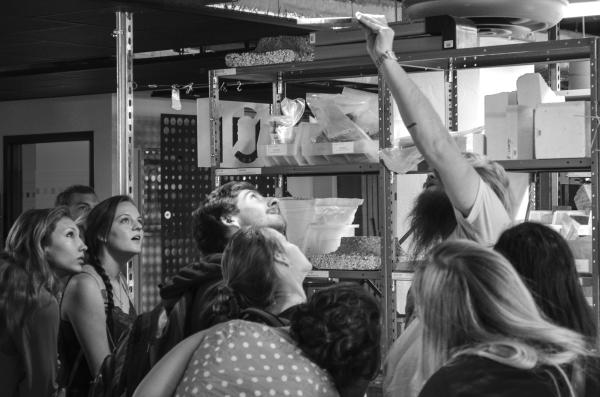Interior Design Program, Materials Lab awarded $60,000 Angelo Donghia Foundation Grant

Since its establishment in 2001, the Materials Lab at The University of Texas at Austin School of Architecture has served as one of the largest academic material collections in the country. With over 29,000 material samples, ranging from conventional products like gypsum board and laminate flooring to more innovative ones like aluminum foam and bark cloth, the Materials Lab’s collection inspires students to rethink the built environment by thoughtfully and responsibly engaging materials in their work.
This year, thanks to a $60,000 grant from the Angelo Donghia Foundation, the Interior Design Program and the Materials Lab will work together to re-envision how students learn about materials by reframing and expanding upon the Materials Lab’s existing collection to better highlight sustainable products.
“For the Interior Design Program, in particular, the Materials Lab is an invaluable resource that enables a hands-on, tactile engagement with materials and introduces students to the wide-ranging possibilities of products that form the built environment,” said Igor Siddiqui, Associate Professor, and Director of the Interior Design Program. “Today, as the introduction of new technologies, climate change, and other social imperatives are rapidly redefining how we engage with materials, there is an urgent need for academia to keep up.”
At the core of this effort is a refocus on sustainability: “Material literacy is fundamental to the pedagogy and practice of built-environment design and planning,” said Jen Wong, Lecturer, and Director of the Materials Lab. “And yet, many students, educators, and practitioners lack the material knowledge essential to ecological and human health, from understanding the quantity of embodied carbon in our most common products to the chemical ingredients of concern in our most intimate interiors.”
Starting this fall and continuing into the spring 2023 semester, two graduate and one undergraduate interior design students will work closely with Wong to restructure the Materials Lab’s circulating library and digital databases. Using industry-standard sustainability criteria and certifications—identified through the cross-comparison of resources like the Mindful Materials database, the International Living Future Institute, and Building Green—they will develop a new taxonomic structure and graphic organization system for the collection, highlighting things like circularity, embodied carbon, health and toxicity, and social equity. In consultation with Wong, other interior design faculty, and local practitioners, the students will also research and procure new acquisitions to the collection based on different areas of opportunity and curate a series of interior-specific exhibitions to showcase the new materials.
Reflecting on the importance of this work, Siddiqui notes: “The students who use the collection today will enter their careers with a critical set of material concerns around sustainability that include circularity, embodied carbon, health and toxicity, and social equity. Twenty years after the Materials Lab was established, there is an urgent need for us to rethink its content and structure so students now and into the future can become effective practitioners, and active stewards of our society and the planet.”

